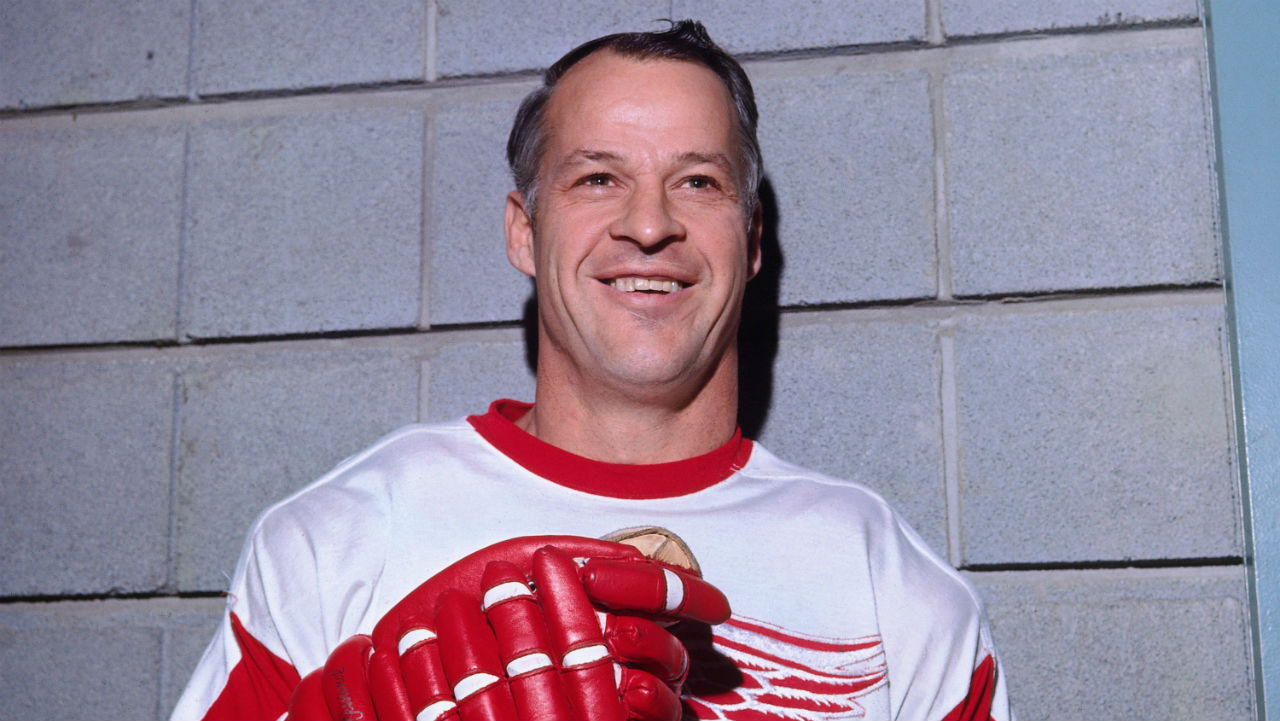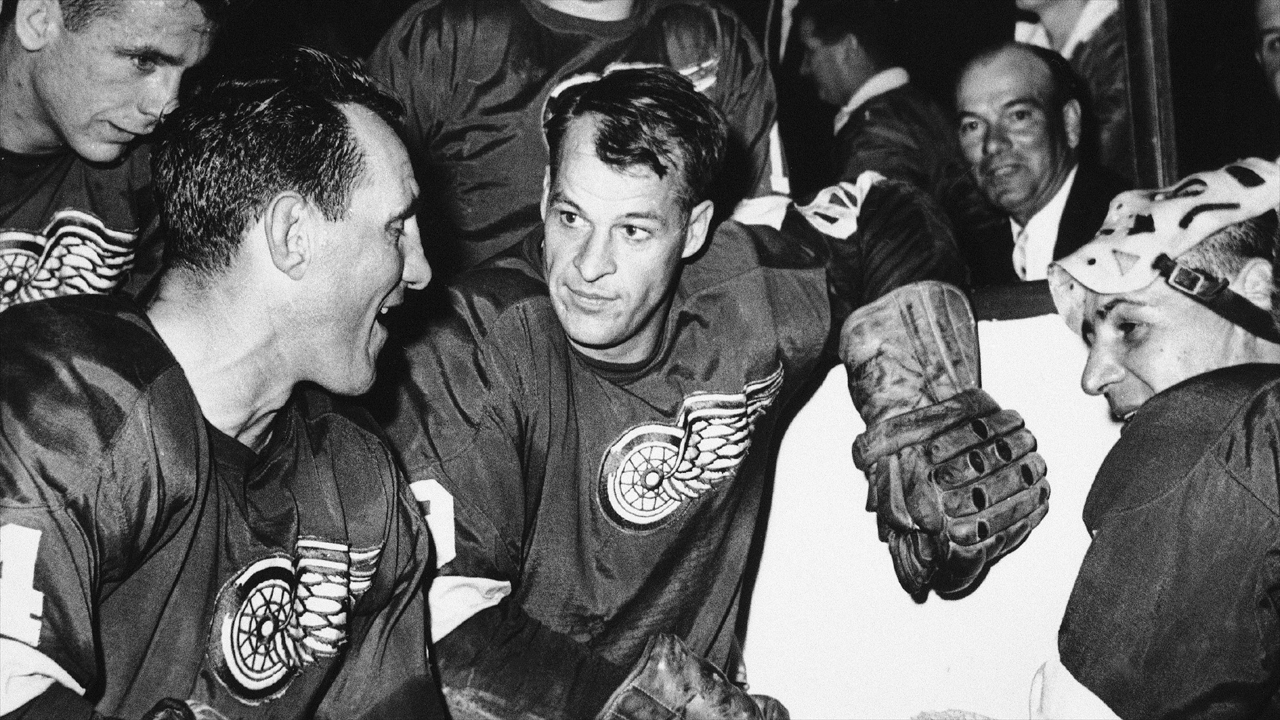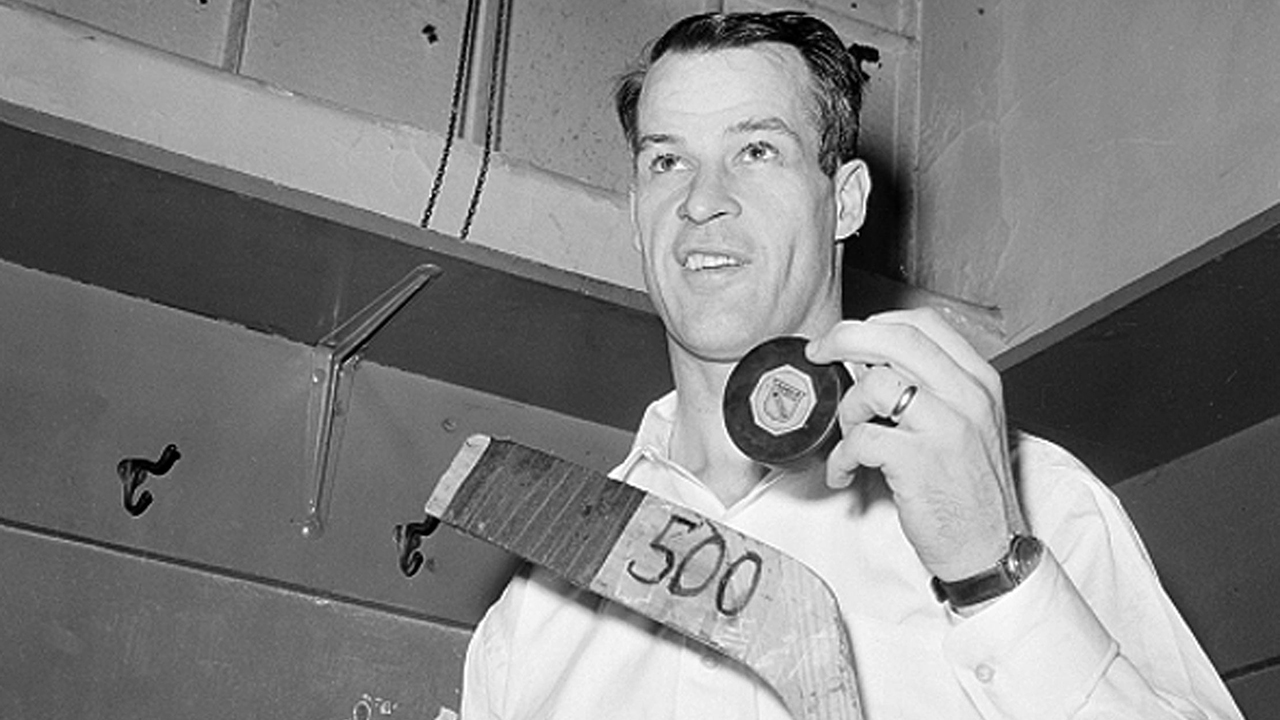We remember Gordie Howe for the 2,421 games he played. For the 975 goals and 1,383 assists in the regular season, stretching into an untouchable five decades of pro hockey. We remember him for his vicious elbows and polite humility. For his four Stanley Cups. For his physical longevity. For conquering the limits we face. We remember Mr. Hockey for the memories—for the thrills we were alive to see, and for those sepia-toned tales passed down through the generations. We remember him for being the greatest player the game had known and, when that was done, for remaining
Mr. Hockey until it was finally time to go.
Because he loved that role: "Mr. Hockey." It wasn’t just a nickname. It was an identity. Howe personified the game. Consider the beginning, so modest and pastoral: Born on March 31, 1928, in Floral, Sask., a tiny village southeast of Saskatoon. He was one of nine children in a poor family trying to survive the Great Depression. Howe stuffed newspapers and magazines into his socks to use as shin pads. His mother saved up money for months to buy him his first pair of skates. He and other local kids played outdoors with a tennis ball, which would be warmed in a neighbour’s oven when it froze.
Howe went from newspaper shin pads to newspaper headlines. He was signed by the Detroit Red Wings when he was just 16 years old and began playing with the team in 1946, when he was 18. He was an unusual mix of size and skill—a right-winger who intimidated opponents with his ability to both score and hit. His gracious nature disappeared on the ice. He was feared. And resilient. His career, and life, were almost cut short in 1950, when he had a violent collision with Maple Leafs captain Ted Kennedy during a playoff game. Then 21, Howe lay unconscious on the ice, covered in blood gushing from his head. Doctors thought the hemorrhage might kill him. The next season, he won the scoring title.
Mr. Hockey was still playing pro hockey almost 30 years later. In 1980, Howe returned to Detroit for his 23rd All-Star Game. He was 51 and preparing to retire at the end of the season. He was introduced last for the Prince of Wales Conference. "And from the Hartford Whalers…" the announcer said, and the fans were on their feet before he could finish. Mr. Hockey skated onto the ice in his white all-star jersey, the only player with grey hair. "Representing all of hockey with great distinction for five decades—No. 9!"
The fans erupted as they had so many times before. They roared as Howe meekly waved, looked to the ice and skated to the bench, not knowing how to stop their praise.
"Gordie, Gordie, Gordie, Gordie," they chanted.
And the cheers kept coming, as though they’d never stop.
"Just listen to these Detroit fans," the announcer said. "They’re still on their feet. This ovation may never end."





